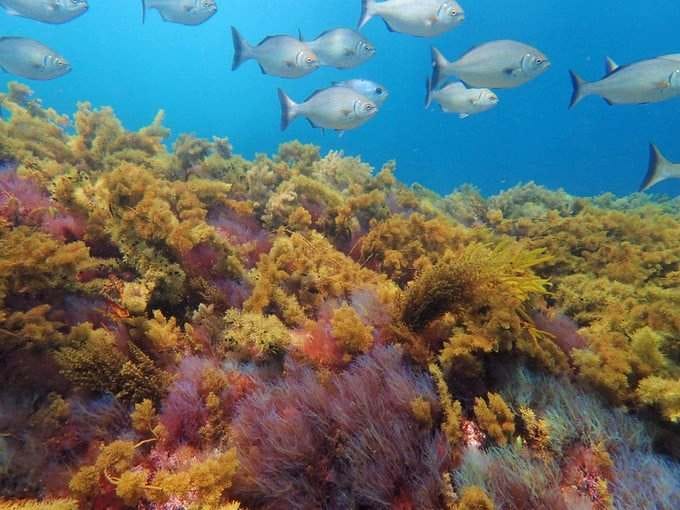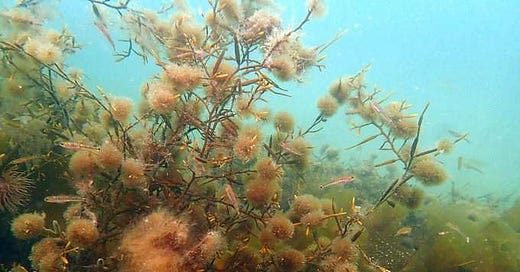This month, Yara India inked a deal with Sea6 Energy to distribute the latter’s biostimulant AG Boost across 4500 sales points in India. It’s significant, because it is the first biostimulant based on the tropical Kappaphycus that is seeing mass market uptake (most biostimulants are based on cold-water kelps).
It’s also more proof that agrochemical multinationals are taking seaweed biostimulants seriously.
A recent meta-analysis of 180 biostimulant studies showed that
the add-on yield benefit among all biostimulant categories is on average 17.9%
biostimulant applied in arid climates had the highest impact on crop yield
biostimulants were more efficient in low soil organic matter content, non-neutral, saline, nutrient-insufficient, and sandy soils.
In a hotter, drier world where soils degrade further while fertilizer norms get stricter, the market opportunity for seaweed biostimulants will continue to grow. Agchem giants have not failed to notice.
Agchem buy-outs and product development
Syngenta (Switzerland/China, $16.7B revenue) acquired Valagro in 2020; Valagro annexed Norwegian seaweed biostimulant producer Algea in 2002.
UPL (India, $6.3B revenue) got hold of Arysta in 2019. Arysta swallowed French seaweed company Goëmar in 2014.
Yara (Norway, $16.6B revenue) launched its own line of seaweed biostimulants in 2019.
FMC (US, $5.4B revenue) introduced SeaMac Rhizo in 2020.
BASF (Germany, $78B revenue) bought a stake in Sea6 Energy in 2022.
OCP (Morocco, $8.4B revenue) signed an agreement to cooperate with The Seaweed Company in 2021. This month, OCP also invested in Israeli seaweed bioplastics startup Biotic through its investment arm UM6P Ventures.
And there is more wind in the sails for biostimulants. On July 16, the EU’s Fertilising Products Regulation came into being. While biostimulants were previously only considered as plant protection, the new regulation recognizes that biostimulants also support crop growth and yield.
For the first time, all EU member states will share the same official definition of biostimulants, which will improve market access and set a precedent for the rest of the world, while new product label rules will improve trustworthiness in the market.

Kelp forest science reaches new lows
In the Galapagos archipelago, the world’s first tropical kelp forest was recently discovered at a depth of more than 60 meters. The cooler temperatures in the deep allow the kelps to survive. A unique cold water current upwelling nearby might allow them to survive global heating for a bit longer.
Off the shores of Antarctica, seaweed scientists sank even lower, finding Palmaria decipiens growing at 100 metres depth.
And in England, stands of the economically important species Laminaria hyperborea are being replaced by their warm-water cousins, with profound effects.
Restoration news
June saw the birth of the Kelp Forest Alliance, advancing a global movement to protect, enhance, and restore our world’s kelp forests. It’s Australian scientists leading the initiative, and their effort to restore Tasmania’s kelp forest is gathering pace. Argentina’s first project is bearing fruit as well. In Canada, West Coast Kelp started their restoration work, and Ocean Wise made another concerted policy push with their Seaforestation report.
There is more work in Australia, though, as the important but understudied Cystophora forests are also in serious decline.

One way to preserve kelp forests is to restore the predators of kelp-munching urchins. A step on the way is The Nature Conservancy’s new roadmap to recovery for the sunflower sea star, which saw a 94% decline in the period 2017-2020.
Finally: while everyone is trying to limit the spread of urchins, Hawaii is going the opposite direction. The state is on track to outplant a million of them this year to combat an invasive seaweed.



Awesome Steven - thank you.
This is great Steven. Very interesting read.